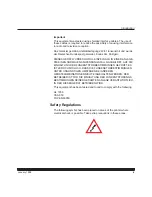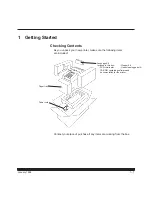
Introduction
vii
January 1998
Radio Frequency Interference
This equipment generates, uses, and can radiate radio frequency energy.
If it is not installed and used in accordance with the User’s Guide, this
energy may cause interference to radio and television reception.
This equipment has been type tested and found to comply with the following:
This device meets FCC Class B emission limits for verification pursuant
to Part 15 of the Federal Communications Commission Rule of the
United States.
“The class B limits for radio noise emissions from digital apparatus as set
out in the interference-causing equipment standard entitled “Digital
Apparatus”, ICES–003 of the Department of Communications.”
“Cet appareil numérique respecte les limites de bruits radioléctriques
applicables aux appareils numériques de Classe B prescrites dans la
norme sur le matriél brouilleur : “Appareils Numériques”, NMB–003
édicté par le minstre des Communications.”
47CFR Part 15 SubPart B (North American – USA) – Class B
ICES–003 (North American – Canada) – Class B
VCCI–2 (Japan) – Class B
Requirements of the EMC directive 89/336/EEC were met through
compliance with the following:
EN50081–1 (European – EU) consists of: EN55022 (class B)
EN60555 – 2
(powerline harmonics)
EN50082–1 (European – EU) consists of: IEC 801 – 2/91 (ESD)
IEC 801 – 3/84
(rf immunity)
IEC 801 – 4/88 (EFT)
“Changes or modifications not expressly approved by the party responsible
for compliance could void the user’s authority to operate the equipment.”








































